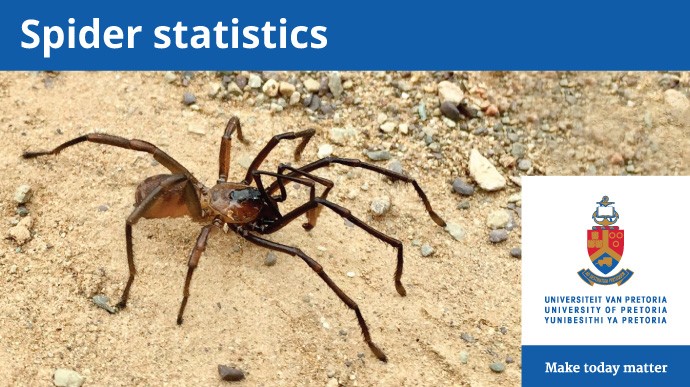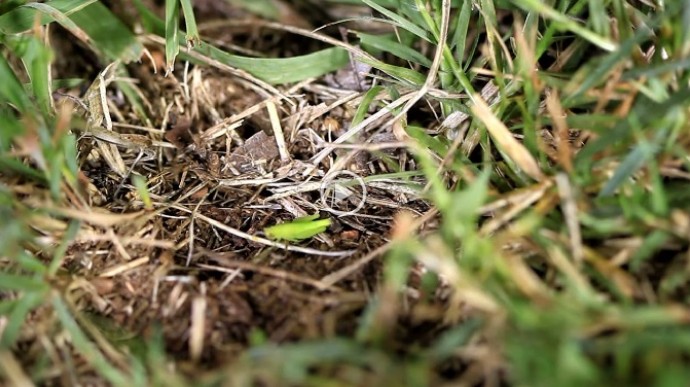A biological phenomenon known as “polyploidy” may hold the key to how species adapt to climate change and how we can improve farm yields and cancer drugs.
A biological phenomenon known as “polyploidy” may hold the key to how species adapt to climate change and how we can improve farm yields and cancer drugs.
This is according to researchers based at the University of Pretoria (UP) and Ghent University in Belgium, in a recent article published in the prestigious journal Nature Reviews: Genetics.
An organism is considered polyploid when it has twice the normal number of chromosomes. In other words, polyploidy occurs when an organism’s entire genome is duplicated.
The African Clawed Frog is an example of a polyploid - it has four copies of each chromosome. Polyploidy causes this frog to be much larger than its close relative, the Western Clawed Frog, which has only two copies of each chromosome. Humans also have only two copies of each chromosome, so are considered diploid rather than polyploid.
Polyploids are often infertile and struggle to compete with their non-polyploid relatives - leading to extinction. However, during periods of incredible environmental stress, such as the meteor crash that killed the dinosaurs, polyploids may gain a competitive edge and survive while their counterparts die out.
“We can date polyploidy events, and we have found that polyploids that survived are linked to periods of upheaval like mass extinctions,” says co-author of the review, Prof Yves van de Peer. “Experts now predict that we will see more and more polyploidy in order for today’s species to survive the upheaval caused by man-made climate change.”
He explains that it only recently became possible to make such conclusions and predictions, because we now have advanced bioinformatics tools that can analyse “big data” from the many genomes that have been sequenced.
“If you find a genome duplication event in one plant that occurred during a mass extinction, it could just be coincidence. If you however have 40 plants that show genome duplication at the same point in time, it is likely that the extreme event was responsible,” he says.
Prof Van de Peer says that in the rare event that a genome duplication occurs and the resulting polyploid survives, we usually see an increase in biological complexity and innovation in the long term (millions of years). Flowers - the complex reproductive organs of plants - seem to have developed in this way.
We can however also see the short term (thousands of years) consequences of polyploidy in modern agriculture, where humans have often unknowingly selected polyploid crops, because they for instance produce bigger fruit. Now that scientists understand polyploidy better, it can actively be used to improve agricultural yields.
And Van de Peer says polyploidy could also have health implications for humans, as studies have linked aggressive cancers to polyploidy within the cancer cells, where it affects anti-cancer drug resistance. He hopes that more research into the phenomenon might reveal novel treatment options.
About the authors: Prof Yves van de Peer holds a part-time professorship at UP and is based at Ghent University, Belgium; Prof Kathleen Marchal is a visiting professor at UP and also based at Ghent University; Dr Eschar Mizrachi is based at the Forestry and Agricultural Biotechnology Institute at UP. Their publication, “The evolutionary significance of polyploidy”, recently appeared in the prestigious journal Nature Reviews: Genetics.
Prof Yves van de Peer, Prof Kathleen Marchal, Dr Eschar Mizrachi.
May 17, 2017

Professor Eshchar Mizrachi completed his undergraduate studies as well as his honours, master’s and PhD degrees at the University of Pretoria (UP). He has been employed at the University since 2006, was appointed as a senior lecturer in 2013 and as associate professor in 2019.
Prof Mizrachi says that UP is home to several world-class institutes and facilities that support his area of interest: genomics, bioinformatics and biotechnology. One of his main personal drivers in his career is empowering early-career researchers in Africa and around the world, and doing research that has an impact on society. UP, he adds, creates spaces and initiatives that foster transdisciplinary research in Africa.
Recently, his laboratory has led a multi-lab collaboration to sequence the genome of the king protea (Protea cynaroides), South Africa’s national flower and an iconic representative of the country’s biodiversity and the Cape Floral Kingdom. The genome opens up research opportunities to better understand the ecology, evolution and conservation of protea species and their relatives, and enables new horticulture research.
“My research focuses on sequencing the genomes of indigenous South African and African plant species and modelling complex biological processes, such as carbon allocation and partitioning in plant biomass formation and specialised roots for the acquisition of phosphorus and nitrogen in nutrient-poor soils,” Prof Mizrachi explains. He adds that this methodology can be applied broadly to answer questions about how novel pathways in plants are regulated by gene networks for the production of important chemical compounds.
“In the past decade or so, a convergence of technologies, computational capacity and a global drive for a more sustainable bioeconomy has highlighted the need to study and understand fundamental plant biology and evolution,” he says. Prof Mizrachi believes that his field of research contributes to the betterment of the world because the sequencing of plant genomes and the characterisation of the function of genes and gene networks that control plant traits such as growth, development and nutrient acquisition are critical for conservation efforts, biotechnology in agriculture and forestry, and for synthetic biology applications for novel products such as pharmaceuticals and nutraceuticals.
“I believe we have a moral responsibility in South Africa to study our indigenous plant biodiversity and connect our citizens to it,” he says. With 20 000 to 25 000 plant species, many of which originate in and/or occur exclusively in the country, South Africa is in the top five countries in the world for plant biodiversity. Despite this, the legacy of systemic inequalities is preventing knowledge about our rich biodiversity from reaching most of South Africa’s citizens, especially at a young age. We are engaging with stakeholders in the creative industries to find new ways to foster these connections.”
He has the following message for school learners or undergraduates: “Despite my lifelong love of nature and having researched plants for more than 15 years, it is important to note that I did not study biology in high school, and only really began studying plant biology after my master’s degree. Don’t ever think it’s too late to pursue something you are interested in or curious about.”
Prof Mizrachi hopes that his research contributes to answering fundamental questions about plant development and evolution, and leads to a broader interest from the public to engage with and value the natural world, particularly the amazing plant biodiversity that is around us.
 Story
Story
Nine new trapdoor spider species have been discovered in the Great Karoo by researchers at the University of Pretoria’s (UP) Department of Zoology and Entomology, and the Agricultural Research Council (ARC).
 Infographic
Infographic
Trapdoor spiders hide in underground burrows that are covered with a cork-like lid made of soil, silk and plants. Learn more about trapdoor spiders with this infographic.
 Video
Video
Watch carefully to see how a trapdoor spider catches its prey through its trapdoor.
Copyright © University of Pretoria 2024. All rights reserved.
Get Social With Us
Download the UP Mobile App